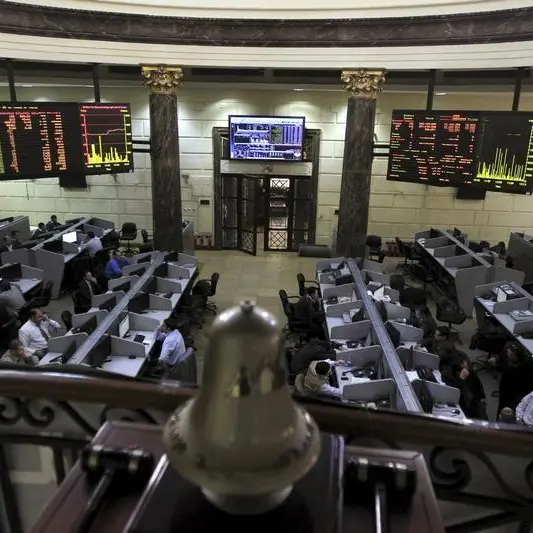NEW YORK- A rise in the yield of U.S. benchmark government debt has pushed it near thresholds that could fuel a wave of Treasury selling by mortgage investors, a scenario likely to exacerbate the bond selloff and cause rates to spike even further.
U.S. yields have been on the rise for the last two months on expectations of increased issuance of Treasuries to finance a massive stimulus package and prospects of a recovery as the world's largest economy emerges from the pandemic.
Since mid-December, 10-year yields have climbed nearly 40 basis points US10YT=RR , touching 1.267% on Tuesday, the highest since March 2020.
The rise in Treasury yields has created the need for investors who hold mortgage-backed securities (MBS) to reduce the risks on the loans they manage to counter the negative effects of slower loan prepayments when interest rates climb, a move known as "convexity hedging".
In general, when interest rates rise, homeowners have less incentive to re-finance their mortgages, reducing the flow of prepayments. When prepayments slow, the duration gets longer on an MBS because the holder is getting less principal repayment coming in the pool every month. Duration estimates how a bond's price is expected to move in reaction to changes in interest rates.
Most bonds have positive convexity. As interest rates fall, the price of the bond will rise at an increasing rate, but when rates increase, the price will fall at a declining rate.
For bonds with negative convexity like MBS, when interest rates increase, a mortgage goes down in price by a greater amount than for normal bonds because the expected maturity of the mortgage becomes longer.
MBS investors such as insurance companies and real estate investment trusts who need to maintain a certain duration target would have to reduce that duration by either selling Treasury futures or by buying interest rate swaps where they would exchange a fixed coupon with another investor for a floating rate, a move that effectively reduces the duration of an asset.
"I think rates are headed higher so I think convexity is something to be worried about," said Priya Misra, head of U.S. rates strategy, at TD Securities in New York.
"When somebody is hedging, it tends to create a big market reaction and then it's over for the next two to three weeks. But it can be a pretty vicious move."
That said, Patrick Leary, chief market strategist and senior trader at broker-dealer Incapital, said there already were some convexity flows a few weeks ago, as 10-year Treasury yields ramped up from 1% in late January to 1.20% on February 8.
"Portfolio managers will look to hedge out their convexity duration issue by paying fixed in the swaps market and that tends to push swap spreads versus Treasuries wider," said Leary.
U.S. 10-year swaps measure the cost of exchanging fixed rate cash flows for floating rate ones over a 10-year term.
Spreads on 10-year U.S. interest rate swaps over Treasuries rose to 8.25 basis points on Thursday, the widest since March 2020. That spread was last at 7 basis points.
To be sure, convexity flows, even in the last few years, have not been as large as those seen in the run-up to the global financial crisis in 2008.
The mortgage portfolios of the housing government-sponsored enterprises Fannie Mae and Freddie Mac have contracted significantly since the crisis. Fannie and Freddie were the biggest hedgers pre-crisis since they actively managed the duration gap between their assets and liabilities.
In addition, the Federal Reserve, under its quantitative easing program, holds about 22% of the MBS market, but it does not hedge the convexity risk, analysts said.
"There's still risk of convexity hedging and it's still interesting, and market-important, but it's just so much less than it used to be," said Harley Bassman, managing partner at Simplify Asset Management.
"The Fed has removed much of the convexity in the market and the associated market volatility," said Bassman, who created the MOVE index, the benchmark for rate volatility, when he was at Merrill Lynch.
BofA Securities in a research note said it doesn't expect much convexity hedging below the 1.25%-1.4% level in the 10-year yield.
For TD's Misra, 10-year yields of 1.3% and higher could trigger convexity flows. "There is no magic level per se," but this is the number she sees that should nudge the primary mortgage rate, or the rate the borrower pays, higher.
Mortgage buyer Freddie Mac reported on Thursday that the average rate on the benchmark 30-year fixed-rate home loan remained at last week's 2.73%, just 8 basis points higher from its all-time low of 2.65% on Jan. 7.
U.S 10-year Treasury yields, on the other hand, have risen by 13 basis points in the same period.
(Reporting by Gertrude Chavez-Dreyfuss; Editing by Alden Bentley and Chizu Nomiyama) ((gertrude.chavez@thomsonreuters.com; 646-301-4124; Reuters Messaging: rm://gertrude.chavez.reuters.com@reuters.net))











